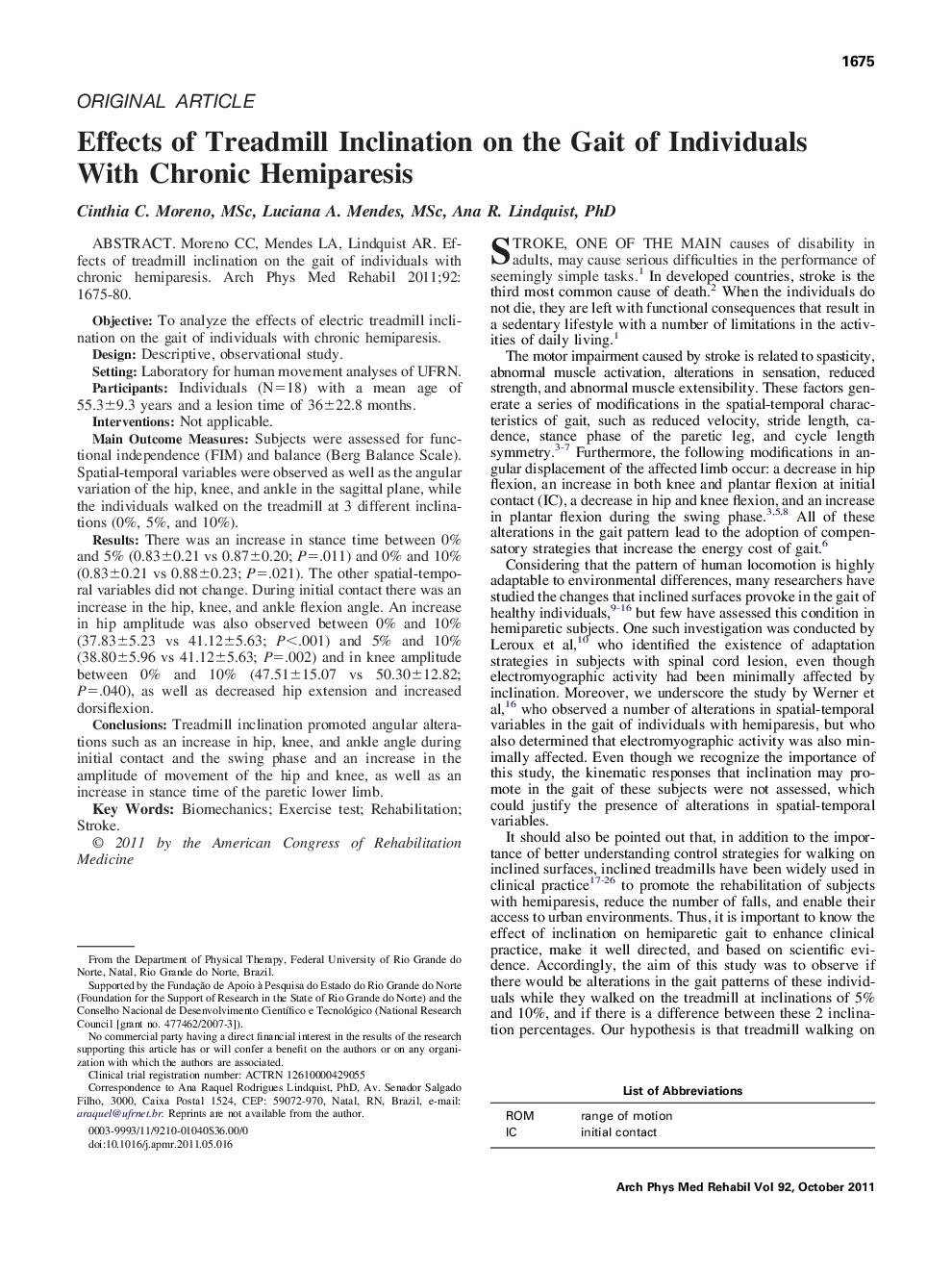| Article ID | Journal | Published Year | Pages | File Type |
|---|---|---|---|---|
| 3450079 | Archives of Physical Medicine and Rehabilitation | 2011 | 6 Pages |
Moreno CC, Mendes LA, Lindquist AR. Effects of treadmill inclination on the gait of individuals with chronic hemiparesis.ObjectiveTo analyze the effects of electric treadmill inclination on the gait of individuals with chronic hemiparesis.DesignDescriptive, observational study.SettingLaboratory for human movement analyses of UFRN.ParticipantsIndividuals (N=18) with a mean age of 55.3±9.3 years and a lesion time of 36±22.8 months.InterventionsNot applicable.Main Outcome MeasuresSubjects were assessed for functional independence (FIM) and balance (Berg Balance Scale). Spatial-temporal variables were observed as well as the angular variation of the hip, knee, and ankle in the sagittal plane, while the individuals walked on the treadmill at 3 different inclinations (0%, 5%, and 10%).ResultsThere was an increase in stance time between 0% and 5% (0.83±0.21 vs 0.87±0.20; P=.011) and 0% and 10% (0.83±0.21 vs 0.88±0.23; P=.021). The other spatial-temporal variables did not change. During initial contact there was an increase in the hip, knee, and ankle flexion angle. An increase in hip amplitude was also observed between 0% and 10% (37.83±5.23 vs 41.12±5.63; P<.001) and 5% and 10% (38.80±5.96 vs 41.12±5.63; P=.002) and in knee amplitude between 0% and 10% (47.51±15.07 vs 50.30±12.82; P=.040), as well as decreased hip extension and increased dorsiflexion.ConclusionsTreadmill inclination promoted angular alterations such as an increase in hip, knee, and ankle angle during initial contact and the swing phase and an increase in the amplitude of movement of the hip and knee, as well as an increase in stance time of the paretic lower limb.
